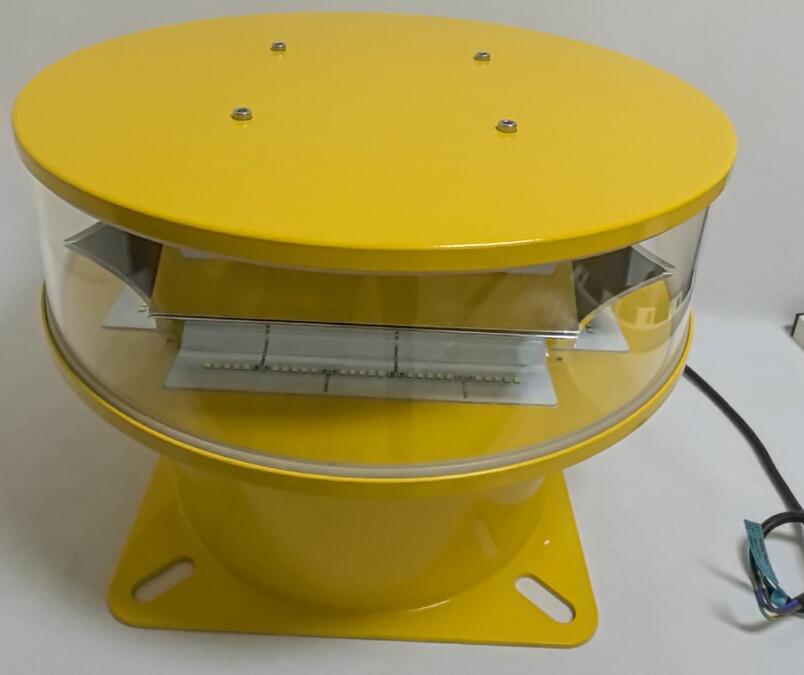LED Obstruction Light: The Smarter Way to Safeguard Airspace
As aviation infrastructure grows more complex, LED obstruction light systems are revolutionizing how we protect aircraft from ground-based hazards. These advanced lighting solutions combine cutting-edge technology with stringent safety compliance to create visible warnings that are more reliable, efficient, and sustainable than traditional alternatives. This article examines why LED systems have become the industry standard and how they're shaping the future of aerial safety.
Why LED Technology Dominates Modern Obstruction Lighting
Unmatched Energy Efficiency
Consumes 80% less power than incandescent systems
Typical power draw of just 15-50W per unit
Enables solar-powered operation in remote locations
Superior Operational Performance
Instant full-intensity illumination (no warm-up period)
50,000-100,000 hour lifespan (5-10 years continuous use)
Minimal lumen depreciation over time
Enhanced Visibility Characteristics
Precise light spectrum targeting (620nm red/5500K white)
Customizable flash patterns (40-60 fpm standard)
360° coverage with specialized optics
Technical Innovations in LED Obstruction Lights
Smart Control Systems
Automatic brightness adjustment based on ambient light

Remote monitoring and configuration capabilities
Predictive maintenance alerts via IoT connectivity
Advanced Thermal Management
Graphene-coated aluminum heat sinks
| LED Obstruction Light |
Passive convection cooling designs
Temperature-regulated driver circuits
Durability Enhancements
IP66/68 waterproof ratings
UV-resistant polycarbonate lenses
| LED Obstruction Lights |
-40°C to +70°C operational range
Regulatory Compliance Made Smarter
LED systems meet all major aviation standards:
Standard Requirement LED Advantage
FAA AC 150/5345-43 Intensity levels Programmable drivers
ICAO Annex 14 Color chromaticity Precision-tuned LEDs
EN 61820 Flash patterns Microcontroller control
CASA MOS 139 Durability Military-grade materials
Installation Best Practices
Structural Integration
Finite element analysis for wind loading
Lightning protection systems
Electromagnetic interference shielding
Maintenance Optimization
Drone-assisted inspections
Modular component replacement
Annual photometric verification
Cost-Benefit Analysis
Financial advantages over 10 years:
60-75% lower operating costs
90% reduction in maintenance
ROI within 2-3 years for most installations
50% longer service life than alternatives
Emerging Technologies
Next-Gen Developments
LiFi-enabled lights for data transmission
Self-powered piezoelectric systems
AI-driven predictive failure analysis
Nanophotonic light guides
Case Study: Empire State Building Retrofit
The 2018 LED upgrade achieved:
82% energy reduction (58kW to 10.5kW)
30% increase in visibility range
Customizable color schemes for special events
Predictive maintenance through IoT sensors
Future Outlook
The LED obstruction light market is projected to grow at 12.7% CAGR through 2029, driven by:
Urban air mobility expansion
Smart city infrastructure development
Renewable energy integration
Advanced material science breakthroughs
LED technology has transformed obstruction lighting from a passive safety feature into an intelligent, connected system that actively contributes to airspace safety. With their unparalleled efficiency, reliability, and smart capabilities, LED obstruction lights are setting new standards in aviation safety while reducing environmental impact.
For aviation authorities, infrastructure developers, and safety professionals, adopting LED systems represents both a regulatory necessity and a strategic investment in future-proof safety solutions. As our skies become more crowded with traditional aircraft, drones, and eVTOLs, these advanced lighting systems will play an increasingly vital role in preventing collisions and ensuring safe navigation for all airspace users.
